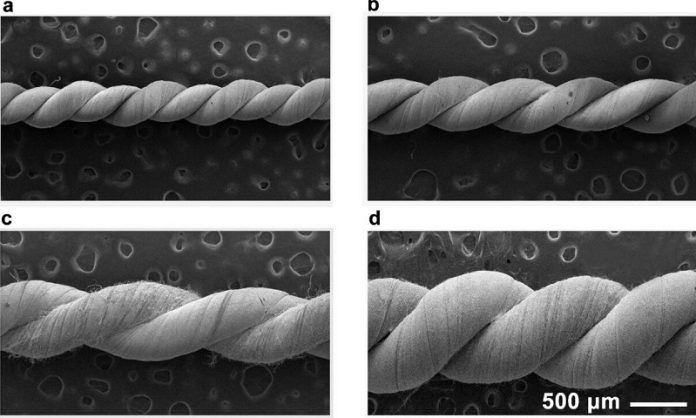
Scientists have developed a special type of yarn that can collect water from fog, offering a new solution to the problem of water scarcity in dry regions.
Inspired by the way desert beetles and spider silk naturally gather water, this bioinspired yarn has the potential to provide freshwater in areas where water is difficult to access.
This discovery could make a big difference in addressing the global water crisis.
Water scarcity is a growing issue, especially in remote and arid regions where access to fresh water is limited.
Traditional methods for collecting water from the air are often inefficient, requiring a lot of energy or taking too long.
But in nature, certain animals, like desert beetles and spiders, have evolved efficient ways to collect water.
By learning from these organisms, scientists are developing materials that could improve the efficiency of water harvesting.
In a study published in the Chinese Journal of Polymer Science, researchers from the Beijing Institute of Graphic Communication and Beihang University revealed their new double-strand yarn.
This yarn has alternating sections that repel water (hydrophobic) and attract water (hydrophilic), similar to how desert beetles and spider silk work.
By mimicking these natural patterns, the yarn is designed to collect water from fog more effectively.
The yarn is made from two types of nanofibers: one hydrophobic, called PVDF-HFP, and the other hydrophilic, called PAN. Using advanced techniques, the scientists created a yarn that combines the best of both materials.
The hydrophobic sections help gather water droplets from the fog, while the hydrophilic sections move the water along the yarn for faster collection. When tested in a fog-filled environment, the yarn collected water at an impressive rate of 3.20 grams per hour per square centimeter.
This new yarn performed much better than other types of materials, making it a promising option for water collection in areas with regular fog. It is scalable, meaning it can be produced on a large scale, making it ideal for use in places facing severe water shortages.
Prof. Yong Zhao from Beihang University, who led the research, said, “This shows how we can learn from nature to solve global challenges like water scarcity. By copying the way nature works, we were able to significantly improve fog collection.”
This breakthrough could have a major impact on water collection technologies, especially in foggy areas where water is scarce. It also opens the door for future innovations that could make collecting water from the air even more efficient and sustainable.



